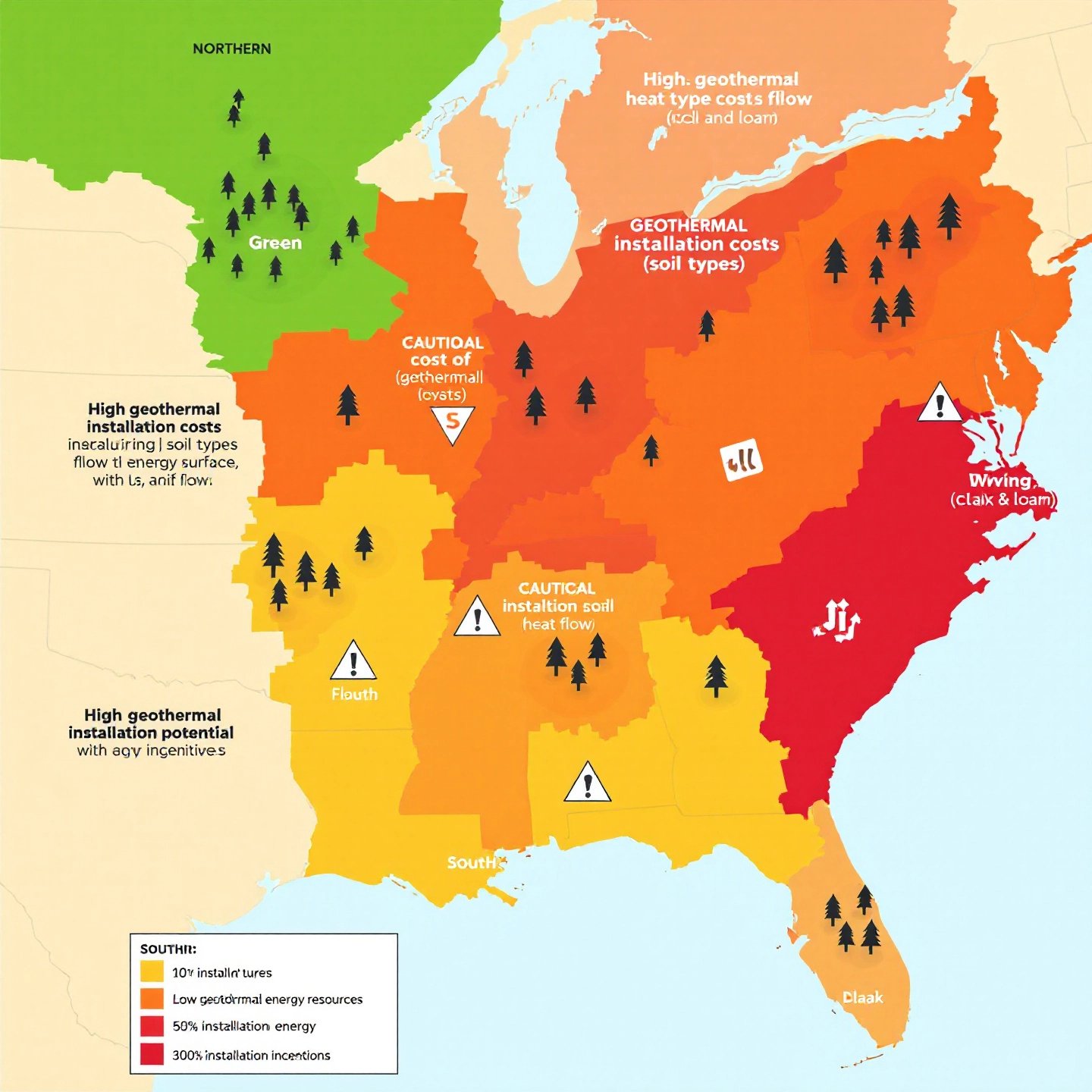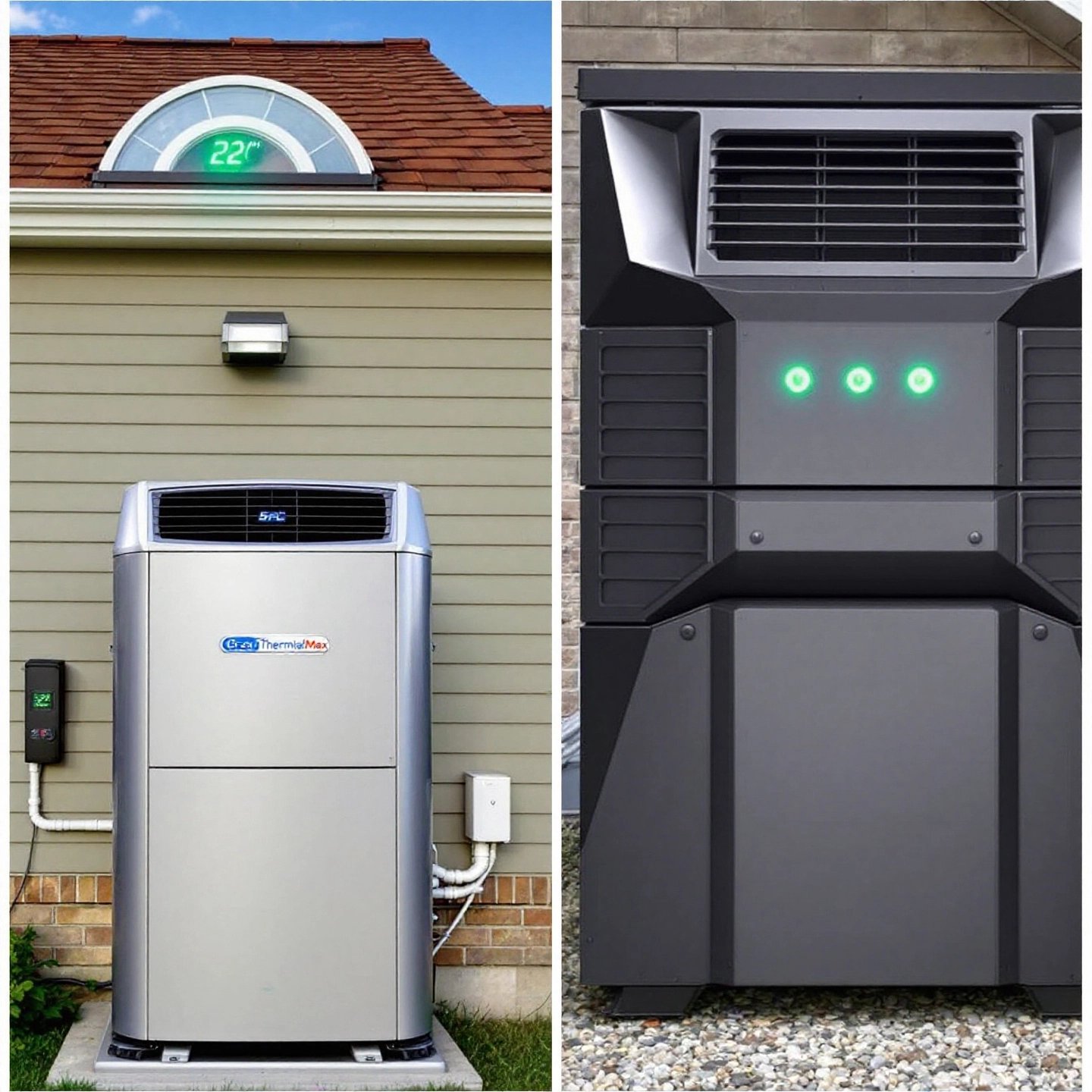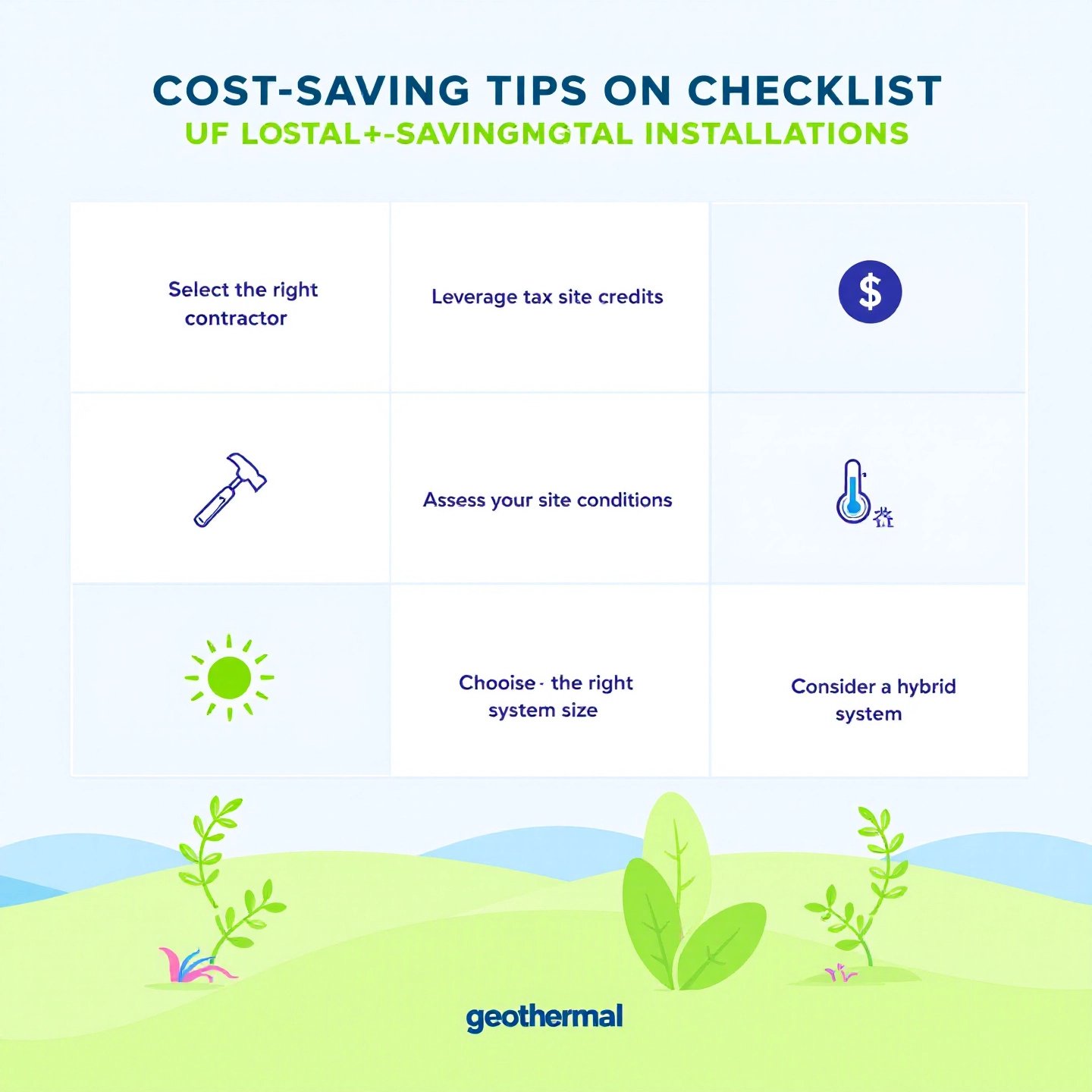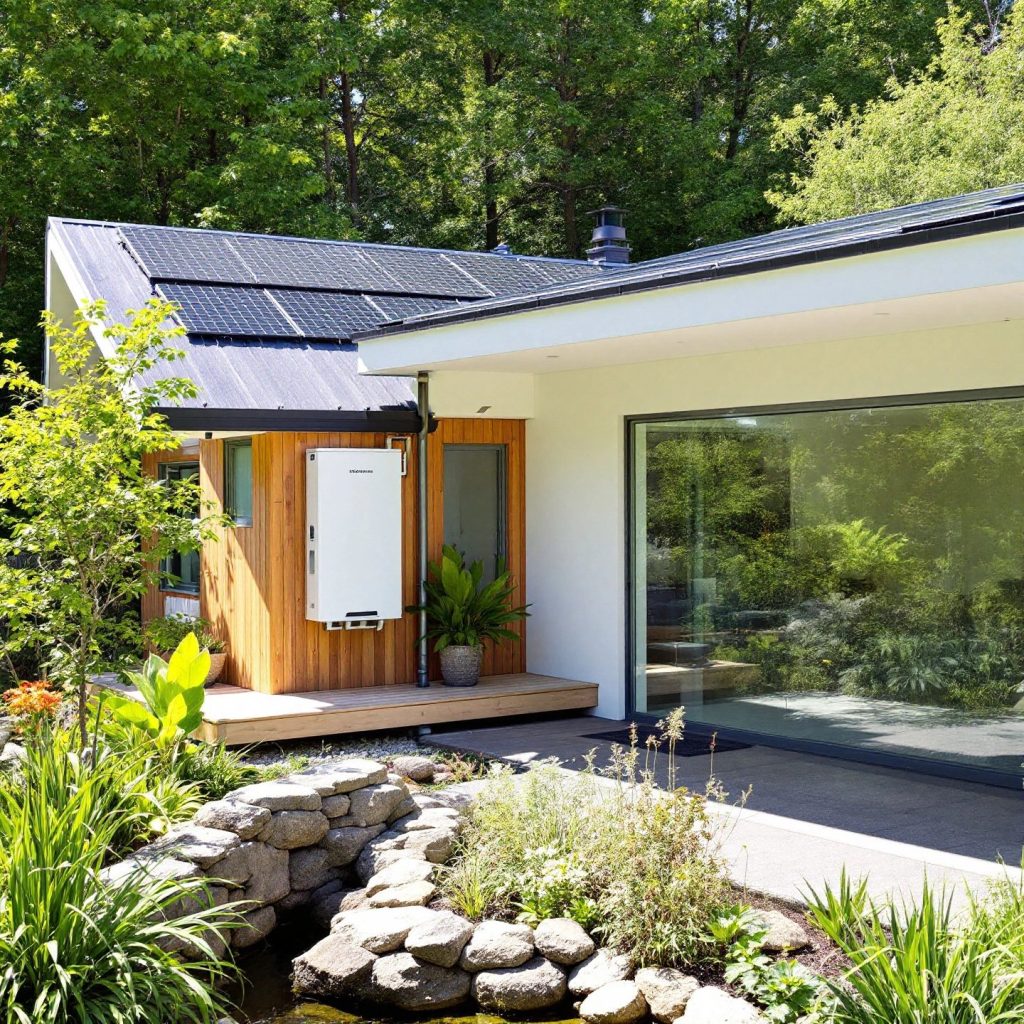Introduction to Geothermal Heat Pump Cost
When considering eco-friendly home improvements, understanding the geothermal heat pump cost is paramount. This technology, which taps into the Earth’s natural heat, offers a sustainable alternative to traditional heating and cooling systems. Yet, the initial investment can be significant, making it essential for homeowners and environmentally conscious individuals to grasp the financial implications fully.
Geothermal heat pumps are known for their efficiency and long-term savings potential. However, the upfront costs can vary widely, influenced by factors such as the type of system, installation complexity, and geographical location. For instance, a typical installation can range from $12,000 to $45,000, depending on specific needs and site conditions (Carrier). This article will delve into these cost components, breaking down equipment, labor, and material expenses.
Understanding these costs is not just about budgeting; it’s about making informed decisions that align with your sustainability goals. As we explore the various elements influencing geothermal heat pump expenses, you’ll gain insights into how these systems can offer substantial energy savings over time. Whether you’re a homeowner looking to reduce your carbon footprint or someone interested in long-term economic benefits, this guide will equip you with the knowledge needed to navigate the geothermal landscape effectively.
Understanding the Fundamentals of Geothermal Heat Pump Costs
When evaluating the geothermal heat pump cost, it’s crucial to break down the various components that contribute to the total investment. Each element, from equipment to installation labor, plays a significant role in determining the final price. Here’s a closer look at the fundamental cost components:
- Geothermal Equipment Cost: The heat pump unit itself is a major expense. High-quality units with superior Energy Efficiency Ratio (EER) and Coefficient of Performance (COP) ratings tend to be more expensive but offer greater efficiency. Look for ENERGY STAR-certified models, which, although higher in upfront cost, provide long-term energy savings (EnergySage).
- Ground Loop Installation: The type of ground loop—horizontal, vertical, or pond/lake—significantly affects costs. Horizontal loops are generally less expensive due to lower labor demands, while vertical loops require specialized drilling equipment, increasing expenses (Dandelion Energy).
- Labor Costs: Skilled labor is essential for the precise installation of geothermal systems. This includes trenching for loops and integrating the system with existing home infrastructure. The complexity of the installation site can further drive labor costs.
- Materials and Additional Components: Beyond the heat pump and loops, additional materials such as piping, grout, and heat transfer fluids are necessary. The quality and durability of these materials can influence both initial costs and long-term maintenance expenses.
- Permitting and Administrative Fees: Local permits are often required, with fees varying widely based on location. These administrative costs are crucial for compliance and can add to the overall geothermal heat pump cost.
Understanding these components helps homeowners make informed decisions about their geothermal investments. As we move forward, we’ll explore how geographical and environmental factors further influence these costs, providing a comprehensive view of what to expect when considering a geothermal heat pump system.

Key Factors That Influence Installation Expenses
When considering a geothermal heat pump, it’s essential to understand how various factors can influence installation costs. These elements can significantly affect the overall expense, making it crucial to consider them during the planning phase. Let’s delve into the primary factors that can impact your geothermal installation costs:
- Geography: The geographical location of your home plays a pivotal role in determining installation costs. Areas with a higher geothermal gradient, such as regions near tectonic plate boundaries, may offer more efficient geothermal energy extraction, potentially reducing costs. Conversely, in areas with lower geothermal activity, more extensive drilling might be necessary, increasing expenses (Alliance for Innovation and Infrastructure).
- Soil Conditions: The type of soil and rock present on your property can also affect costs. Soft soils and fewer rock formations make drilling easier and less expensive, while hard rock or waterlogged areas can complicate installation, requiring specialized equipment and increasing labor costs (Dandelion Energy).
- Local Energy Incentives: Many states and local governments offer incentives to offset the initial costs of geothermal installations. These can include tax credits, rebates, or low-interest financing options. For example, federal tax credits can cover up to 26% of the installation cost, significantly reducing the financial burden for homeowners (U.S. Department of Energy).
To provide a clearer picture, here’s a comparative table illustrating how these factors can affect costs in different scenarios:
| Factor | Impact on Cost | Example Region |
|---|---|---|
| High Geothermal Gradient | Lower Costs | California, Nevada |
| Hard Rock Soil | Higher Costs | Rocky Mountain Regions |
| Available Incentives | Reduced Costs | New York, Massachusetts |
By understanding these geothermal installation cost factors, homeowners can better plan and budget for their geothermal systems, ensuring they maximize both efficiency and savings. Next, we’ll explore how specific home characteristics influence system sizing and further impact costs.
Evaluating Residential Needs for Optimal System Sizing
When considering a geothermal heat pump, evaluating your home’s specific needs is crucial for determining the optimal system size and managing costs effectively. Several factors, including household size, climate, and insulation levels, play a significant role in this evaluation. Let’s explore how these elements impact the residential geothermal heat pump cost and system sizing:
- Household Size: Larger homes generally require more extensive geothermal systems to maintain comfortable temperatures, which can increase both equipment and installation costs. Smaller homes, conversely, may benefit from smaller, less expensive systems.
- Climate: The local climate significantly affects system requirements. In regions with extreme temperatures, a larger system may be necessary to efficiently manage heating and cooling loads, adding to the initial investment (WaterFurnace).
- Insulation Levels: Well-insulated homes can often use smaller geothermal systems, as less energy is needed to maintain desired indoor temperatures. Improving insulation can be a cost-effective way to reduce overall system size and expense.
Beyond these factors, homeowners should consider integrating additional renewable energy solutions, like solar panels, to enhance cost efficiency and sustainability. Platforms such as Renewable Energy Nexus offer a range of solar panel options that can complement geothermal systems, reducing reliance on grid energy and further lowering utility bills.
By carefully assessing these home factors and exploring complementary renewable technologies, you can optimize your geothermal system’s size and cost, ensuring a sustainable and economically viable solution for your heating and cooling needs. As we move forward, we’ll compare different tonnage options to help you make an informed decision on the right system for your home.

Comparing Different Tonnage Options and Their Price Implications
When selecting a geothermal heat pump, understanding the differences between various tonnage options is crucial for making an informed decision. The two most common choices for residential applications are 5-ton and 10-ton geothermal heat pumps. Let’s explore how these options differ in terms of cost, energy output, and suitability for different home sizes.
Choosing the right tonnage depends heavily on the size and energy needs of your home. A 5-ton geothermal heat pump is typically suitable for homes ranging from 2,500 to 3,500 square feet, providing approximately 60,000 BTUs of heating capacity (JustAnswer). On the other hand, a 10-ton unit is more appropriate for larger homes over 4,000 square feet, offering around 120,000 BTUs. Here’s a comparative look at the costs and outputs:
| Tonnage | Approximate Cost Range | Energy Output (BTUs) | Suitable Home Size |
|---|---|---|---|
| 5 Ton | $20,000 – $30,000 | 60,000 BTUs | 2,500 – 3,500 sq. ft. |
| 10 Ton | $35,000 – $50,000 | 120,000 BTUs | 4,000+ sq. ft. |
While the initial investment for a 10-ton system is higher, it can be more cost-effective for larger homes by efficiently managing higher heating and cooling loads. Conversely, a 5-ton system offers a more economical choice for medium-sized homes without sacrificing comfort or efficiency.
It’s important to conduct a detailed energy assessment to determine the appropriate system size for your home. This ensures that you choose a geothermal heat pump that meets your specific needs without incurring unnecessary costs. As we continue, we’ll explore the cost implications of replacing existing geothermal systems, providing insights into when a replacement makes financial sense.
Breaking Down Replacement Costs and When They Make Sense
Understanding the cost to replace a geothermal heat pump is crucial for homeowners looking to maintain an efficient and reliable heating and cooling system. While geothermal systems are known for their durability, they eventually require replacement, typically after 20 to 25 years of service. Here, we explore the factors influencing replacement costs and identify key signs that indicate it’s time for a new system.
Indicators for Replacement
- Temperature Inconsistencies: If your geothermal heat pump begins to produce uneven temperatures, it might indicate a failing component. This inconsistency often signals the need for either significant repairs or a complete system replacement (Kearney & Sons).
- Rising Energy Bills: An unexplained increase in energy costs can suggest inefficiencies within your geothermal system, often due to aging or malfunctioning parts that might require replacement.
- Frequent Repairs: If you find yourself frequently calling for repairs, it may be more cost-effective to replace the system rather than continue investing in temporary fixes.
- Odd Noises: Unusual grinding or clanking sounds can indicate severe mechanical issues within the system that might necessitate replacement to avoid complete failure.
Comparing Replacement Costs to New Installations
Replacing a geothermal heat pump can be a significant investment, often ranging from $10,000 to $30,000, depending on the system’s complexity and the specific requirements of your home. This cost is typically lower than a new installation because the groundwork, such as the geothermal loop, is already in place.
In contrast, a new installation might cost between $12,000 and $45,000, as it involves additional expenses like drilling and loop installation. Thus, if your existing loop system is in good condition, opting for a replacement heat pump can be a more economical choice (Knueve & Sons).
Ultimately, deciding whether to repair or replace your geothermal system depends on the extent of the issues and the age of the system. By recognizing the signs of a failing system and understanding the associated costs, you can make informed decisions that ensure continued efficiency and comfort in your home. As we proceed, we’ll explore the long-term savings and return on investment that geothermal systems can offer, providing further insight into their financial benefits.
Analyzing How Much a Geothermal Heat Pump Really Saves Long Term
When considering a geothermal heat pump, it’s essential to evaluate the long-term savings and return on investment (ROI) compared to traditional heating and cooling systems. Geothermal systems offer substantial savings due to their high efficiency and low operating costs, making them a wise choice for eco-conscious homeowners.
Typical Energy Savings
- Heating Efficiency: Geothermal systems can achieve efficiencies of 400-600%, far exceeding the 98.5% efficiency of the best gas furnaces. This efficiency translates to savings of 55-75% on heating costs (Energy Catalyst Technologies).
- Cooling Efficiency: For cooling, geothermal systems can reduce costs by 30-50%, offering a significant advantage over traditional air conditioning systems, which often have a higher energy demand.
- Overall Utility Bill Reduction: On average, homeowners can expect to save between 40% and 60% on their total annual energy bills, depending on usage and local energy rates (Scott-Lee Heating Company).
Comparing Heat Pump vs. Geothermal Cost
While the initial cost of a geothermal system is higher than that of a conventional heat pump, the long-term savings can make it a more economical choice. Here’s why:
- Initial Investment: Geothermal systems typically cost $20,000 to $30,000 more upfront than traditional systems but offer greater efficiency (Energy Catalyst Technologies).
- Return on Investment: With significant reductions in energy bills, the payback period for geothermal systems is generally 5-10 years, after which the savings continue to accumulate throughout the system’s lifespan, which can exceed 25 years.
Moreover, integrating other sustainable technologies, such as solar panels from Renewable Energy Nexus, can further enhance savings. By combining geothermal with solar, homeowners can drastically cut grid dependency, leading to even greater financial and environmental benefits.
In conclusion, while geothermal systems require a significant initial investment, their long-term savings and environmental benefits make them a compelling choice for those looking to reduce their carbon footprint and achieve substantial energy savings. As we explore average costs across residential installations, you’ll gain further insights into how geothermal systems can fit into your financial plans.
Exploring the Average Costs Across Residential Installations
Understanding the average cost of geothermal heat pumps in residential settings is crucial for homeowners considering this eco-friendly technology. These systems provide significant long-term savings, but the initial investment can vary widely based on several factors. Here’s a detailed look at what you can expect in terms of costs and the factors that might influence them.
The average cost of installing a geothermal heat pump system for a residential property ranges between $35,000 and $50,000 before incentives. This range can fluctuate based on factors such as system size, the type of ground loop used, and specific site conditions (ACES Energy). Here’s a comparative table to illustrate these costs:
| System Size | Cost Range | Key Factors |
|---|---|---|
| Small (3-5 ton) | $20,000 – $35,000 | Suitable for smaller homes, lower energy demand |
| Medium (5-10 ton) | $30,000 – $45,000 | Average-sized homes, moderate energy needs |
| Large (10+ ton) | $45,000 – $60,000 | Larger homes, high energy requirements |
Location-specific factors also play a significant role in determining costs. For example, areas with more challenging soil conditions or limited access to installation sites may incur higher expenses due to the need for specialized equipment and labor. Conversely, regions offering local energy incentives or rebates can help offset these costs significantly. Programs like the federal tax credit, which offers up to 30% off installation costs, can make geothermal systems more affordable (U.S. Department of Energy).
By understanding these average costs and the influencing factors, homeowners can better plan their investments in geothermal technology. This knowledge not only aids in budgeting but also ensures that you can make informed decisions that align with both your financial and environmental goals. As we continue, we’ll explore strategies to further reduce your geothermal investment, maximizing both savings and sustainability.

Practical Tips for Reducing Your Overall Geothermal Investment
Investing in a geothermal heat pump can be a substantial financial commitment, but there are effective strategies to reduce costs and enhance your investment’s value. Here are some practical tips to help you minimize your geothermal investment while maximizing benefits:
- Select the Right Contractor: Choosing an experienced and reputable contractor can significantly impact the total cost. Look for professionals with a proven track record in geothermal installations to ensure efficient and cost-effective service. Check reviews and ask for references to make an informed decision.
- Leverage Tax Credits and Incentives: Take advantage of federal and state tax credits to lower your initial costs. For instance, the U.S. federal tax credit offers up to 30% off installation costs for geothermal systems (U.S. Department of Energy). Additionally, explore local incentives and rebates through resources like the Database of State Incentives for Renewables and Efficiency.
- Optimize Energy Efficiency: Before installation, conduct an energy audit to identify areas where your home can improve in efficiency. Enhancing insulation, sealing air leaks, and upgrading windows can reduce the size and cost of the geothermal system needed.
- Consider Financing Options: Many geothermal providers offer financing plans that can spread out the cost over time, making it more manageable. Look for options with low-interest rates and clear terms to avoid hidden fees.
- Plan for Long-Term Savings: While the upfront costs might be high, focus on the long-term savings that geothermal systems provide through reduced energy bills. Calculate the payback period to understand when your investment will start yielding net savings.
Here’s a table summarizing some of the key incentives available:
| Incentive Type | Details | Potential Savings |
|---|---|---|
| Federal Tax Credit | 30% off installation cost until 2032 | Up to $15,000 |
| State Rebates | Varies by state, check local listings | Up to $5,000 |
| Utility Incentives | Discounts for energy-efficient upgrades | Varies |
By employing these strategies and taking full advantage of available incentives, you can significantly reduce your geothermal investment and enjoy the long-term benefits of this sustainable technology. As we conclude, we’ll recap the key points about geothermal heat pump costs and encourage embracing renewable energy solutions for a sustainable future.
Conclusion
In summary, understanding the geothermal heat pump cost is crucial for homeowners looking to invest in sustainable home heating and cooling solutions. We’ve explored the various components that contribute to the initial installation costs, including equipment, labor, and materials, as well as factors like geography and local incentives that can significantly influence these expenses. By considering these elements, you can make informed decisions that align with both your budget and environmental goals.
Geothermal systems offer substantial long-term savings due to their high efficiency, with the potential to reduce energy bills by up to 60%. This makes them an attractive option for those focused on both economic and environmental benefits. Moreover, the integration of complementary renewable energy solutions, such as solar panels from Renewable Energy Nexus, can further enhance these savings, reducing reliance on traditional energy sources and promoting a cleaner, greener future.
As we look towards a more sustainable future, embracing renewable energy solutions is not just an option but a necessity. By investing in technologies like geothermal heat pumps and solar panels, you contribute to a more sustainable planet while enjoying the financial benefits of reduced energy costs. Whether you’re driven by financial savings, environmental responsibility, or both, the transition to renewable energy is a step towards a brighter, more sustainable future.
Frequently Asked Questions
1. What is the average cost of installing a geothermal heat pump?
The average cost for installing a geothermal heat pump ranges from $15,000 to $38,000, depending on system size, site conditions, and location. Factors like soil type and local incentives can further influence these costs.
2. How long does it take for a geothermal heat pump to pay for itself?
A geothermal heat pump typically pays for itself within 5 to 10 years through energy savings. This period can vary based on local energy rates, system efficiency, and available incentives.
3. How do household factors affect geothermal system sizing?
Household size, climate, and insulation levels influence system size. Larger homes or those in extreme climates may need bigger systems, affecting cost. Improving insulation can reduce system size needs.
4. What are the benefits of choosing a geothermal heat pump over traditional systems?
Geothermal heat pumps offer higher efficiency, reducing energy bills by up to 60%. They are environmentally friendly and have a longer lifespan, providing substantial long-term savings despite higher upfront costs.
5. How can I reduce the cost of a geothermal heat pump installation?
To reduce costs, select a reputable contractor, leverage tax credits and incentives, improve home energy efficiency, and consider financing options. Federal tax credits can cover up to 30% of installation costs.



